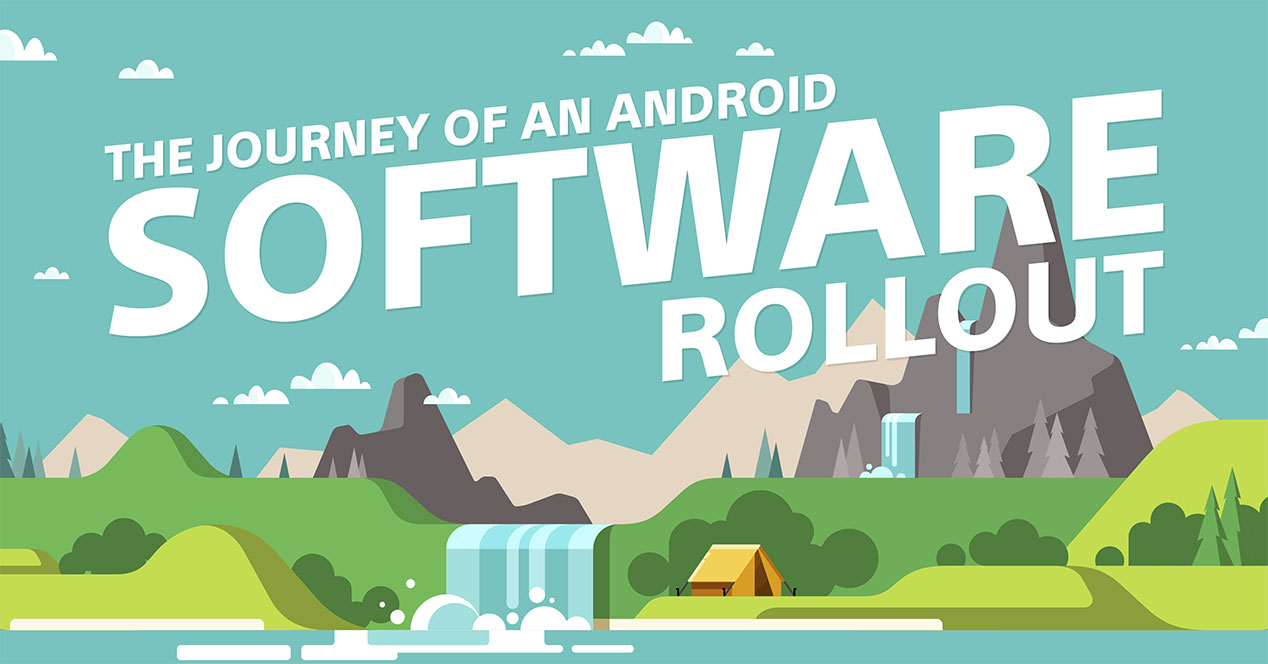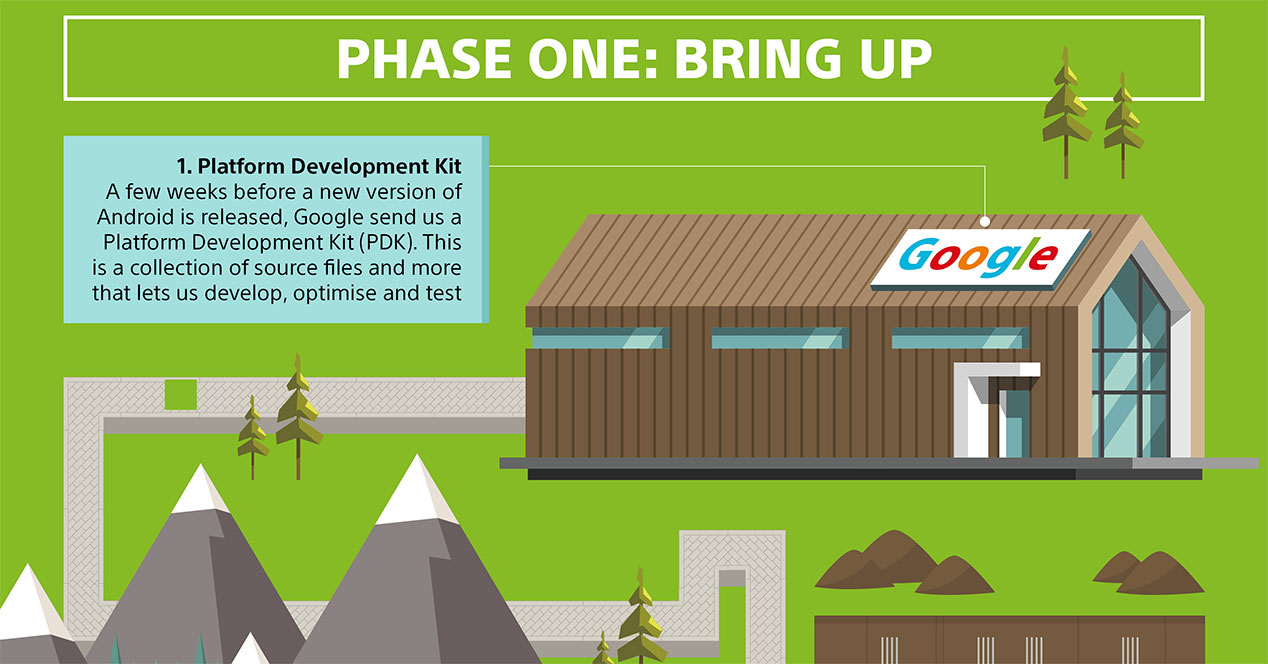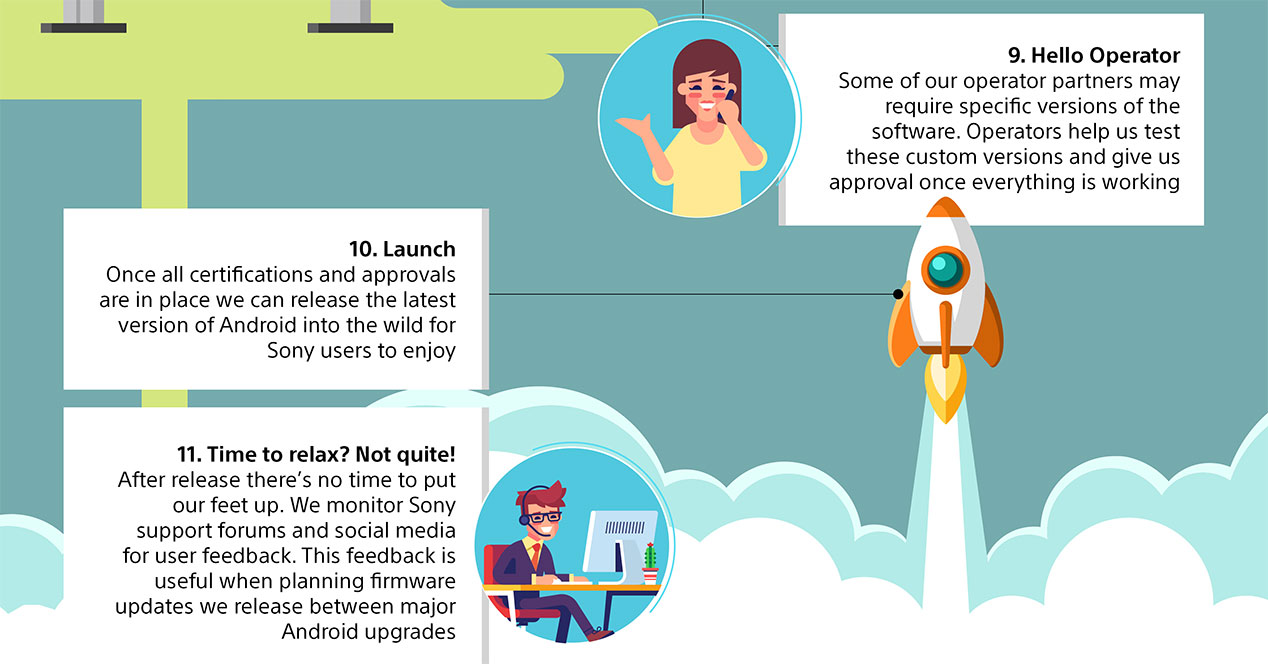
When a new version of Android is announced, it usually takes a long time to reach our mobile phones, if at all. Beyond having a Google phone or a mobile with Android One, manufacturers must take various steps to bring a device up to date. We tell you how Android updates work.
A process in two phases and eleven steps
The step by step that we are going to tell you is based on the sony guide for your Xperia phones. It consists of two phases, the first being construction and the second being certification. In general terms, the manufacturer receives the new Android and must tweak and refine it for all their devices. Later, they will need the help of operators and developers to make sure everything is correct before the official launch.
Steps 1 and 2: The Development Kit and Foundation
First of all is that Google provides the manufacturer with a Platform Development Kit. This PDK is a toolbox with all the necessary materials for the construction of the operating system, and it is usually received a few weeks before the official announcement of the corresponding Android version.
From there, it's time to build the foundations. We are talking about bringing the new version of Android to the existing system. This is the part where, in the rough, Android updates are embedded in what was already there.
Step 3: HAL
It is important to note that it is not just the question of software. Hardware must be taken into account, more in cases like Sony, whose chips work differently from Qualcomm's. HAL stands for Hardware Abstraction Layer, and basically it's all about plugging in the system and machine the right way so that there are no malfunctions in the devices.
Steps 4 and 5: The Basics and the Accessories
Once the hardware and software are functional, it's time to start making sure everything works. The first thing is to implement the basics in a phone: calls, messages and internet connection. These three elements are the foundation of what should work before going further.
The fifth step is where the manufacturer introduces its own customization layer. The user interface, the own apps, the extra features… This is the moment when pure Android becomes something different.
Steps 6 and 7: tests, tests and more tests
So far a version of Android has been built that works for day to day without problems. Everything is where it should and everything works as it should. It is the turn of the tests to make sure you detect possible faults that need to be corrected.
In Sony's case, this is the version it gives to its own people, to its laboratory equipment, and in the closed and public betas. This process is ongoing until a stable version is achieved with no bugs, or at least minimal bugs that do not affect the entire system.
Steps 8 and 9: ensuring standards
Here begins the second phase of the release of Android updates. We must ensure the quality of the product, which is reached standards in technical matters like Wifi, Bluetooth ... everything must be up to date with respect to the uses that the user is going to give the device.
It's time take operators into account as well. They work closely with them to see if specific versions are needed or if unforeseen bugs arise. Approval of all parties is required prior to final release.
Steps 10 and 11: launch and support
If everything has gone correctly up to here, the penultimate step is to officially launch the update. Users will receive them at their terminals and will be able to enjoy the benefits it offers. However, the step by step of Android updates does not end here, because one of the most important things remains: support.
The manufacturer must be attentive to user feedback to fix faults that have been overlooked and any kind of errors that need to be fixed. This is where information is gathered for each phone's firmware updates that take place in between Android releases.
An arduous process for Android updates
It is at this point that the Android version of the moment can be considered launched. The process is long and requires the manufacturer to be very attentive so that everything works as it should. This is what explains why they take so long every time an Android update is announced.
Although fragmentation between systems is a common problem for Google software, the truth is that the search engine only provides a package with the basics, and it is up to each company to do the required work. They take longer, but it is an arduous process to make sure everything works fine.


